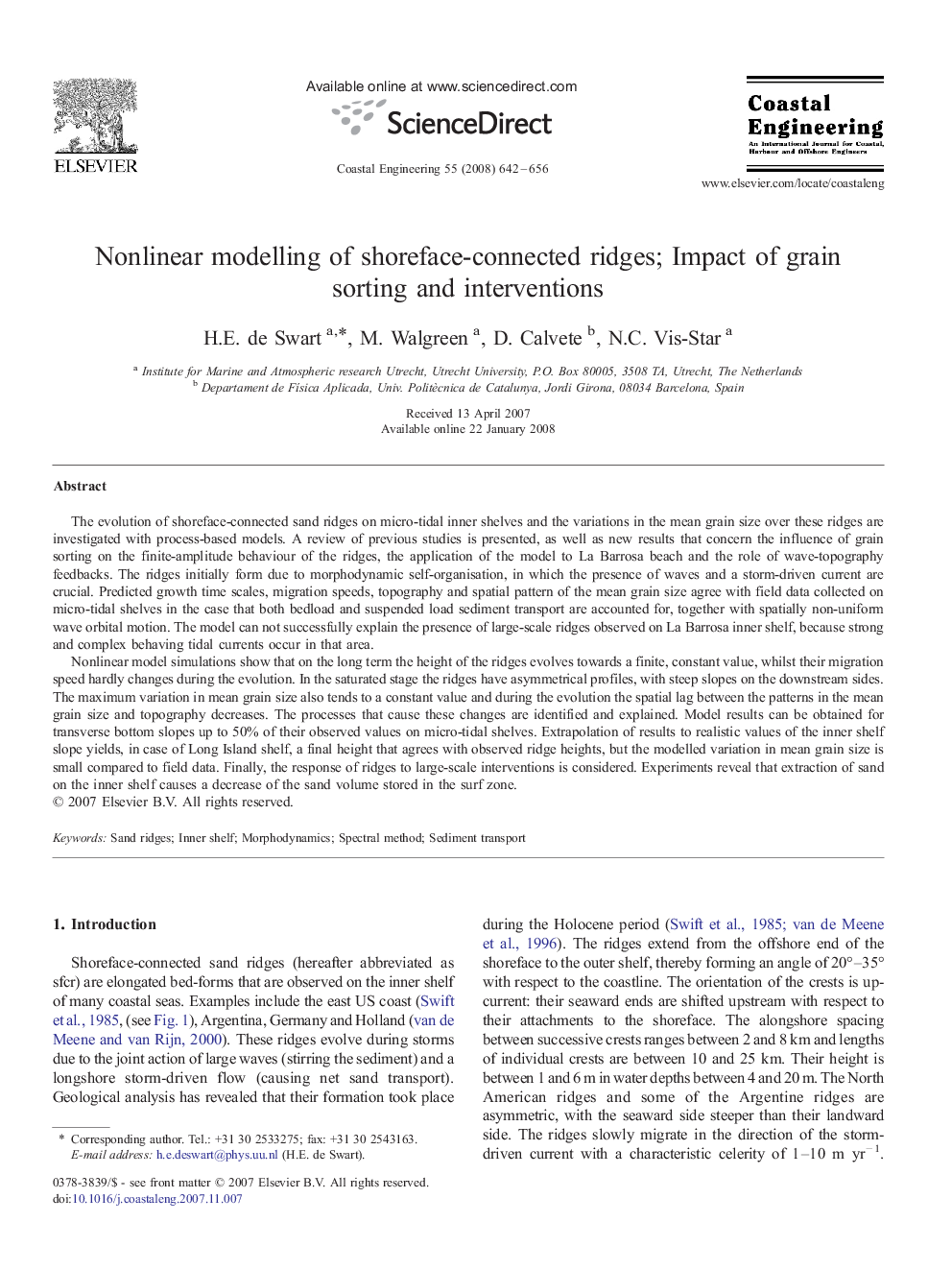| Article ID | Journal | Published Year | Pages | File Type |
|---|---|---|---|---|
| 1721500 | Coastal Engineering | 2008 | 15 Pages |
Abstract
Nonlinear model simulations show that on the long term the height of the ridges evolves towards a finite, constant value, whilst their migration speed hardly changes during the evolution. In the saturated stage the ridges have asymmetrical profiles, with steep slopes on the downstream sides. The maximum variation in mean grain size also tends to a constant value and during the evolution the spatial lag between the patterns in the mean grain size and topography decreases. The processes that cause these changes are identified and explained. Model results can be obtained for transverse bottom slopes up to 50% of their observed values on micro-tidal shelves. Extrapolation of results to realistic values of the inner shelf slope yields, in case of Long Island shelf, a final height that agrees with observed ridge heights, but the modelled variation in mean grain size is small compared to field data. Finally, the response of ridges to large-scale interventions is considered. Experiments reveal that extraction of sand on the inner shelf causes a decrease of the sand volume stored in the surf zone.
Related Topics
Physical Sciences and Engineering
Engineering
Ocean Engineering
Authors
H.E. de Swart, M. Walgreen, D. Calvete, N.C. Vis-Star,
